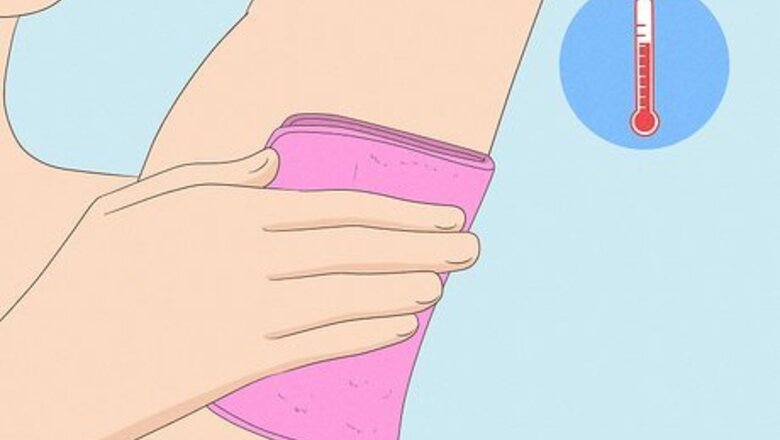
views
- Treat small boils at home with warm compresses, using them several times each day for 10-15 minutes at a time.
- Cover the boil with a bandage after it bursts and apply new dressings each day.
- Call your doctor if your boil doesn’t get better in 1-2 weeks, or if you find yourself getting boils often.
- Most boils heal and clear up after 1-3 weeks. Carbuncles (clusters of boils) take about 2-3 weeks to heal.
Home Remedies
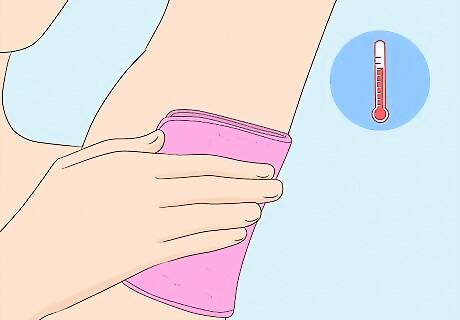
Place a warm compress over the boil in 10-15 minute increments. Dip a clean washcloth in warm water and place it on top of the boil. Leave the compress in place for 10-15 minutes, reapplying it 3-4 times each day. Use a fresh compress each time to prevent any contamination. Always use warm water instead of hot—you don’t want to burn yourself! The warm compress boosts circulation around the boil, which directs more white blood cells to the area. This helps the boil to come to a head, rupture, and drain more quickly. This remedy works for all types of boils, including ones on your groin and buttocks.
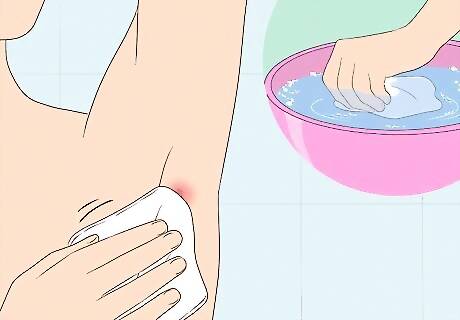
Wash the boil 2 times a day. Dip a clean cloth in soapy water and wash off the surface of the boil. Once the skin is nice and clean, blot it dry with a clean rag. Try not to rub the boil too much as you wash and dry the infected skin. Always use antibacterial soap to clean your boil.
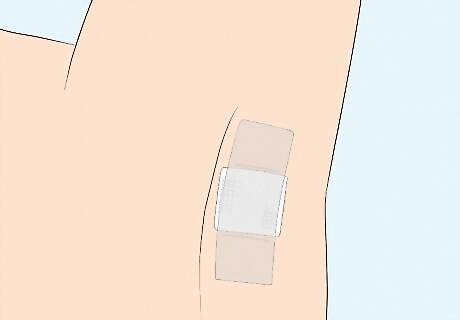
Apply a boil plaster after it ruptures and replace the dressings daily. Loosely cover the boil with sterile gauze, securing it in place with medical adhesive tape. If the ruptured boil starts draining through the gauze, replace the dressings right away. Be sure to change the dressings at least once a day, even if you don’t notice any discharge soaking through. Replace the bandage as soon as you can if it gets wet. Sterile gauze is a great bandage for boils, as it helps the wound continue to drain.
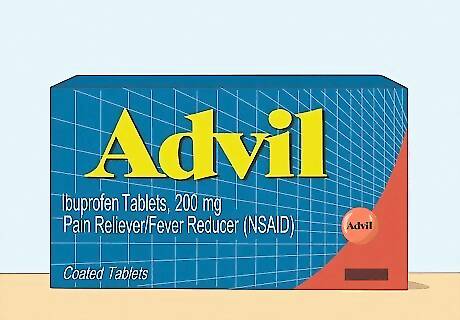
Take over-the-counter painkillers to reduce any pain. OTC medicines like ibuprofen (Advil) and acetaminophen (Tylenol) can help you feel better while the boil continues to heal. Just make sure to follow the proper dosage instructions (for adults): Acetaminophen: Take 325 mg to 1 g every 4 hours (up to 4 g per day) Ibuprofen: Take 200-400 mg every 4 hours (up to 1200 mg per day)
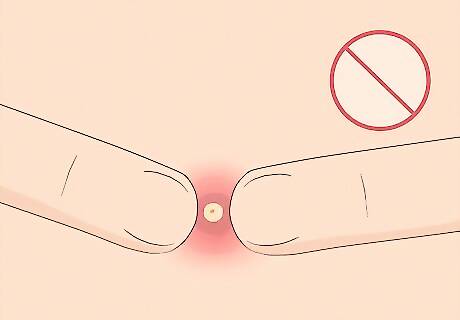
Wait for your boil to heal naturally instead of popping or picking at it. It can be really tempting to speed your boil’s drainage along, especially if you notice a white, pus-filled head forming. This isn’t a good idea, though. Popping and picking at the boil will only make your infection worse in the long run. If you’re ever tempted to pop your boil, apply a warm compress instead.
Medical Treatments
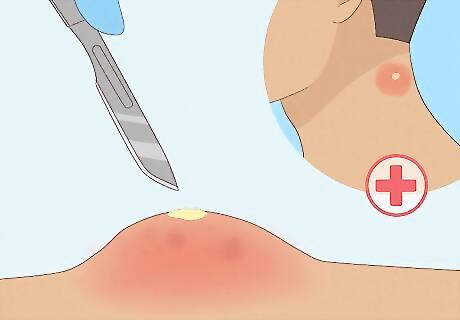
Get large boils drained by a doctor. Your doctor (or hospital personnel) will numb the boil and make a small cut into the numbed skin. This forces the boil to drain and helps promote healing. Your doctor will bandage the drained boil for you and will tell you how to replace the dressings over the next few days and weeks.
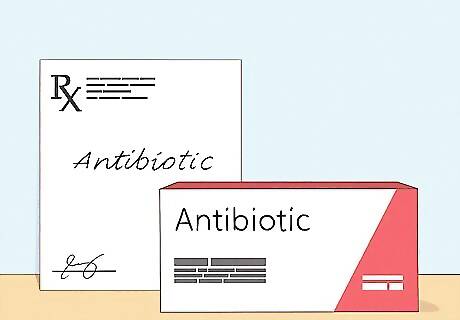
Take prescribed antibiotics to fight a severe infection. Antibiotics are one of the best ways to deal with large boils or clusters of boils (also known as carbuncles), especially if you’re coming down with a fever or dealing with pretty serious pain. Your doctor might also recommend antibiotics if a second infection develops besides the original boil (like cellulitis), or if the boil in question forms on your face. Be sure to take all of the antibiotics your doctor prescribes, even if they start working early on.
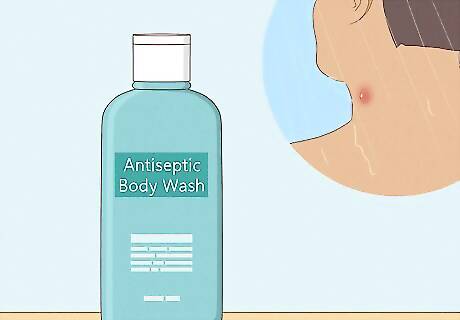
Shower with an antiseptic body wash. During the first week you have the boil, take a shower or bath each day using antiseptic body wash. In the following weeks, use this body wash twice a week instead of applying it every day. Your skin might feel a little dry after you hop out of the shower, so feel free to apply some moisturizer.
Causes
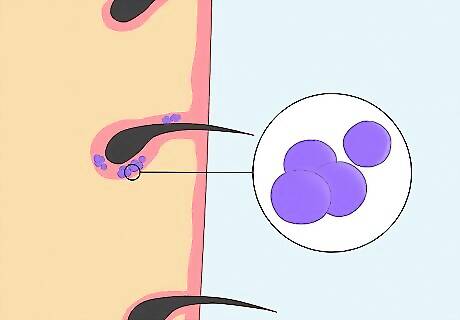
Staph infections typically cause boils. When the Staphylococcus aureus bacteria gets infects a hair follicle, a boil develops at the site. While poor hygiene can lead to staph infections, some people just have a little more staph bacteria on their skin than others, which leads to an infection. Boils can form anywhere on your skin, but they’re most likely to develop on your face, armpits, thighs, buttocks, and along the back of your neck. People with diabetes, anemia, eczema, or a compromised immune system have a greater chance of developing boils.
Symptoms

A painful, swollen bump on the skin is the main symptom of a boil. At the very beginning, boils look like red lumps. After a day or so, the boil collects pus and looks yellow-white at the very top. At its max size, a boil can be at least 2 in (5 cm) long. Boils may feel itchy or extra sensitive when they’re first starting to form.
When to See a Doctor
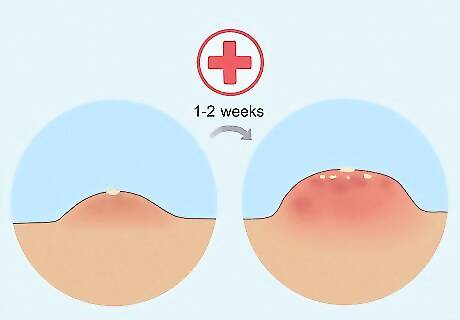
See a doctor if your boil gets worse after 1-2 weeks. Boils may last for up to 3 weeks, but they start to diminish as they rupture and drain. If your boil doesn’t start to heal (or if it keeps getting larger), let your doctor know right away. Especially large boils might feel spongy on the surface—this is a sign that your doctor needs to manually drain the boil. Call your doctor right away if you come down with a fever while your boil is developing/healing. Let your doctor know if you have diabetes, anemia, eczema, or a compromised immune system—these are all risk factors that boost your chances of developing boils.
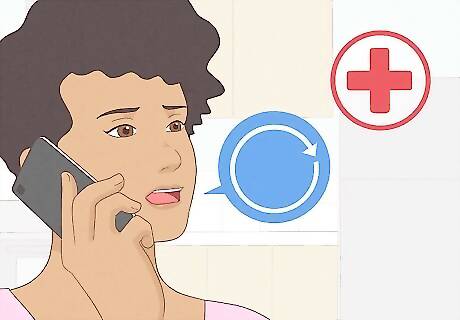
Call your doctor if you get boils often. Frequent boils are really frustrating to deal with, and a doctor can help you narrow down what’s causing them. They might see if your immune system is compromised, or if you (or a family member/roommate) naturally carry staph bacteria on your skin.
Prevention
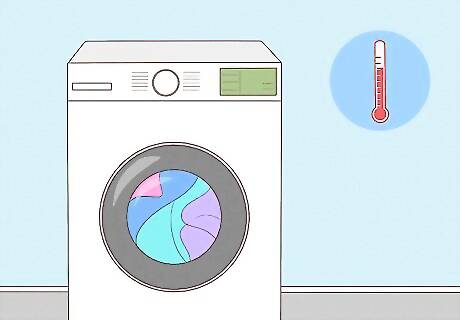
Wash your bedding weekly to prevent the infection from spreading. Run a hot water cycle on your washer to completely clean and disinfect your clothes, linens, and towels. Then, tumble-dry those items on high heat (check the care label first, though). For extra protection, use your own towels and clothes instead of sharing with others.
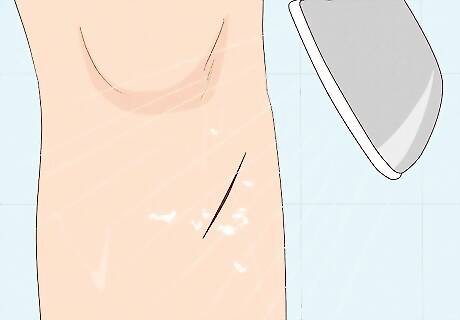
Clean any cuts or wounds as soon as possible. Boils can form after staph bacteria slips into a cut or scrape (no matter how small). Disinfect the wound with soap and water before bandaging it up—this helps prevent any boils from forming.
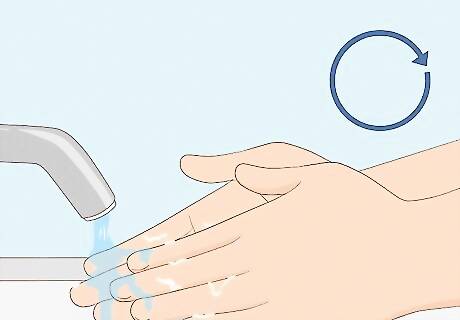
Wash your hands often and shower regularly. Practicing good hygiene is one of the best ways to prevent any boils from popping up. Wash your hands with soap and water throughout the day, and shower/bathe regularly to keep your skin clean and bacteria-free. If you have any children at home, remind them not to pick their noses since a lot of staph bacteria hangs out there.
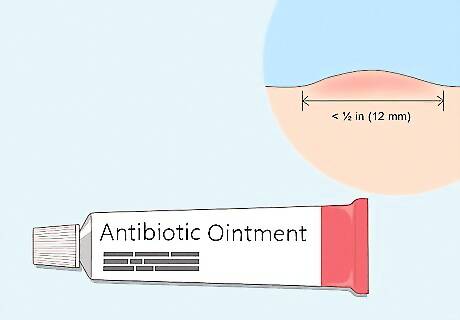
Apply OTC antibiotic ointment to a potential boil that isn’t fully formed. Do you notice a small, sore, and red bump forming on your skin that’s less than ½ in (12 mm) wide? Rub antibiotic ointment over the area 3 times a day to prevent the lump from becoming worse. You can also rub a little bit of antibiotic ointment in your nose. Staph bacteria often pops up there, and an antibiotic ointment can help clear it away.
Outlook

Boils usually go away after 1 to 3 weeks. They start to heal after they rupture and drain—this usually occurs within a week. With regular care and treatment, your boil will likely heal and disappear within 3 weeks. It takes at least 2 weeks to treat and heal from carbuncles, typically with the help of your doctor.



















Comments
0 comment